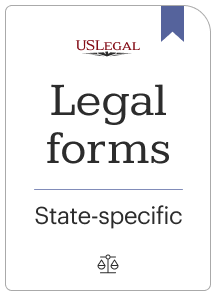

This form provides for the assignment of easements and rights of way. Florida Assignment of Easements and Rights of Way play a crucial role in the realm of property law, ensuring that the legal rights associated with an easement or right of way can be transferred from one party to another. An Easement refers to a legal right granted to someone to use a portion of another individual's property for a specific purpose. This purpose could include accessing a neighboring property, running utility lines, or installing and maintaining infrastructure. In Florida, the Assignment of Easements and Rights of Way allows the transfer of these rights and obligations to a new owner or entity. This legal document enables the granter, the current owner of the easement or right of way, to transfer their rights and benefits to the assignee, receiving compensation in return. There are various types of Florida Assignment of Easements and Rights of Way, each serving a distinct purpose within specific contexts: 1. Private Easements Assignment: This type of assignment allows for the transfer of easement rights between private individuals or entities. It commonly occurs when properties change ownership, and the new owner needs to continue benefiting from an existing easement. 2. Public Easements Assignment: In contrast to private easements, public easements are controlled by government entities and serve the public interest. An assignment of this nature occurs when a government agency transfers an easement right to another agency or organization for public infrastructure development or better land utilization. 3. Prescriptive Easements Assignment: These easements arise out of continuous and uninterrupted use of another person's property without obtaining prior permission. The assignment of prescriptive easements involves the transfer of these acquired rights from one holder to another. 4. Non-Exclusive Easements Assignment: A non-exclusive easement refers to a shared right of use by multiple parties. An assignment can occur when the assignee wishes to obtain a portion of the existing holder's rights or share responsibilities related to the easement or right of way. 5. Easement by Necessity Assignment: This type of easement is granted when a property owner is entirely landlocked and requires access through another individual's property. An assignment of easement by necessity can occur when the owner of the dominant estate transfers their right to access to a new owner. Overall, a Florida Assignment of Easements and Rights of Way serves as a legal instrument to facilitate the transfer of rights and obligations associated with easements or rights of way. It allows for seamless transitions in property ownership and ensures that the assignee can continue enjoying the benefits and access stipulated by the existing easement agreement.
Florida Assignment of Easements and Rights of Way play a crucial role in the realm of property law, ensuring that the legal rights associated with an easement or right of way can be transferred from one party to another. An Easement refers to a legal right granted to someone to use a portion of another individual's property for a specific purpose. This purpose could include accessing a neighboring property, running utility lines, or installing and maintaining infrastructure. In Florida, the Assignment of Easements and Rights of Way allows the transfer of these rights and obligations to a new owner or entity. This legal document enables the granter, the current owner of the easement or right of way, to transfer their rights and benefits to the assignee, receiving compensation in return. There are various types of Florida Assignment of Easements and Rights of Way, each serving a distinct purpose within specific contexts: 1. Private Easements Assignment: This type of assignment allows for the transfer of easement rights between private individuals or entities. It commonly occurs when properties change ownership, and the new owner needs to continue benefiting from an existing easement. 2. Public Easements Assignment: In contrast to private easements, public easements are controlled by government entities and serve the public interest. An assignment of this nature occurs when a government agency transfers an easement right to another agency or organization for public infrastructure development or better land utilization. 3. Prescriptive Easements Assignment: These easements arise out of continuous and uninterrupted use of another person's property without obtaining prior permission. The assignment of prescriptive easements involves the transfer of these acquired rights from one holder to another. 4. Non-Exclusive Easements Assignment: A non-exclusive easement refers to a shared right of use by multiple parties. An assignment can occur when the assignee wishes to obtain a portion of the existing holder's rights or share responsibilities related to the easement or right of way. 5. Easement by Necessity Assignment: This type of easement is granted when a property owner is entirely landlocked and requires access through another individual's property. An assignment of easement by necessity can occur when the owner of the dominant estate transfers their right to access to a new owner. Overall, a Florida Assignment of Easements and Rights of Way serves as a legal instrument to facilitate the transfer of rights and obligations associated with easements or rights of way. It allows for seamless transitions in property ownership and ensures that the assignee can continue enjoying the benefits and access stipulated by the existing easement agreement.